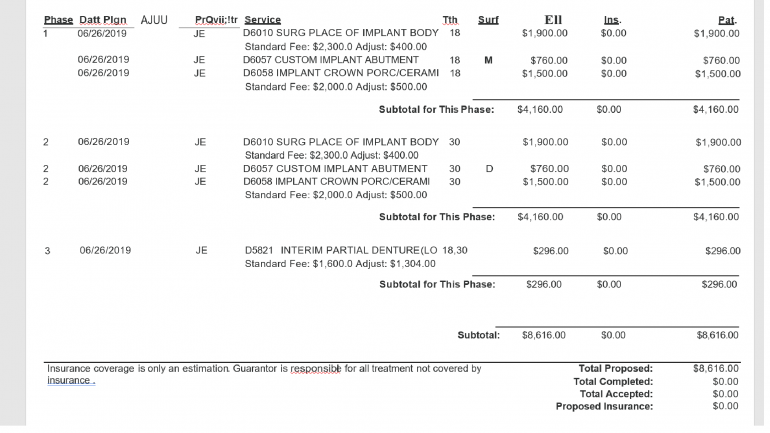
Dental Code D2981: Inlay repair necessitated by restorative material failure
Dental restorations, such as inlays, are designed to be durable and long-lasting. However, in some cases, the restorative material used may fail, necessitating a repair procedure. Dental Code D2981 specifically refers to the inlay repair process that is required when the restorative material has failed.
What does Dental Code D2981 Mean?
Dental Code D2981 is used to describe the procedure of repairing an inlay restoration when the restorative material has failed. An inlay is a type of dental restoration that is custom-made to fit inside the contours of a prepared tooth, typically used to restore a large cavity or other tooth damage. When the material used in the original inlay restoration begins to deteriorate or break down, a repair procedure is necessary to maintain the integrity and function of the tooth.
Examination and Diagnosis
The first step in the inlay repair process is a comprehensive dental examination by a qualified dentist. During this examination, the dentist will carefully inspect the existing inlay restoration, as well as the surrounding tooth structure, to determine the extent of the material failure and the appropriate course of action. This evaluation may involve the use of specialized imaging techniques, such as X-rays or digital scans, to get a detailed view of the tooth and the extent of the problem. The dentist will also assess the overall oral health of the patient and consider any other factors that may be contributing to the failure of the inlay, such as clenching, grinding, or poor oral hygiene habits.
Removal of the Existing Inlay
If the dentist determines that the inlay restoration needs to be repaired, the next step is to carefully remove the existing inlay. This is typically done using specialized dental instruments, such as hand instruments or rotary burs, to gently loosen and extract the inlay without causing further damage to the tooth. The dentist will take great care to ensure that the underlying tooth structure is not compromised during this process, as this could potentially weaken the tooth and lead to additional complications. Once the inlay has been removed, the dentist will thoroughly clean the preparation to ensure that it is free of any remaining restorative material or debris.
Preparation of the Tooth
Once the existing inlay has been removed, the dentist will then prepare the tooth to receive the new inlay restoration. This may involve removing any decayed or damaged tooth structure, cleaning the preparation, and ensuring that the tooth is properly shaped and contoured to receive the new inlay. The dentist may use a variety of specialized instruments, such as burs, diamonds, and polishing discs, to carefully refine the tooth preparation and create a smooth, even surface for the new inlay. This step is crucial in ensuring that the new inlay will fit properly and function effectively within the tooth.
Impressions and Fabrication of the New Inlay
After the tooth has been prepared, the dentist will take an impression or digital scan of the prepared tooth. This impression or scan is then used to fabricate the new inlay restoration in a dental laboratory. The laboratory technicians will use specialized materials and techniques to create a custom-fitted inlay that will perfectly match the prepared tooth. This may involve the use of advanced CAD/CAM (computer-aided design/computer-aided manufacturing) technology to ensure the most precise and accurate fit possible. The laboratory will also carefully color-match the new inlay to blend seamlessly with the surrounding tooth structure.
Placement of the New Inlay
Once the new inlay has been fabricated, the dentist will carefully place it into the prepared tooth. This process involves precisely fitting the inlay into the tooth, ensuring that it is properly seated and that the margins are sealed to prevent leakage or further damage to the tooth. The dentist may use specialized adhesives or cements to securely bond the inlay in place, and may also make minor adjustments to the fit and occlusion (bite) of the restoration to ensure a comfortable and functional result.
Adjustments and Finishing Touches
After the inlay has been placed, the dentist may need to make minor adjustments to ensure that the bite is properly balanced and that the inlay is flush with the surrounding tooth structure. This may involve the use of specialized polishing instruments to refine the surface of the inlay and ensure a smooth, comfortable fit. The dentist may also use these tools to make any necessary adjustments to the shape or contour of the inlay to optimize its appearance and function within the mouth.
Final Evaluation and Aftercare
Once the inlay repair procedure is complete, the dentist will perform a final evaluation to ensure that the restoration is functioning properly and that the patient is satisfied with the results. The patient will be provided with instructions for proper oral hygiene and the maintenance of the new inlay, as well as any necessary follow-up appointments. This may include recommendations for regular dental checkups and cleanings to ensure the long-term health and stability of the inlay restoration. The dentist may also provide guidance on any dietary or lifestyle changes that the patient can make to help preserve the integrity of the new inlay.
Summary of Dental Code D2981
Dental Code D2981 refers to the procedure of repairing an inlay restoration when the restorative material has failed. This process involves the careful removal of the existing inlay, the preparation of the tooth, the fabrication of a new inlay in a dental laboratory, and the precise placement and finishing of the new restoration. By following this comprehensive and detailed procedure, dentists can help to restore the function and appearance of a damaged tooth, ensuring that the patient can continue to maintain good oral health and a beautiful smile.
Find the best deal on inlay repair at Dr. BestPrice - Dental Auction Platform.
